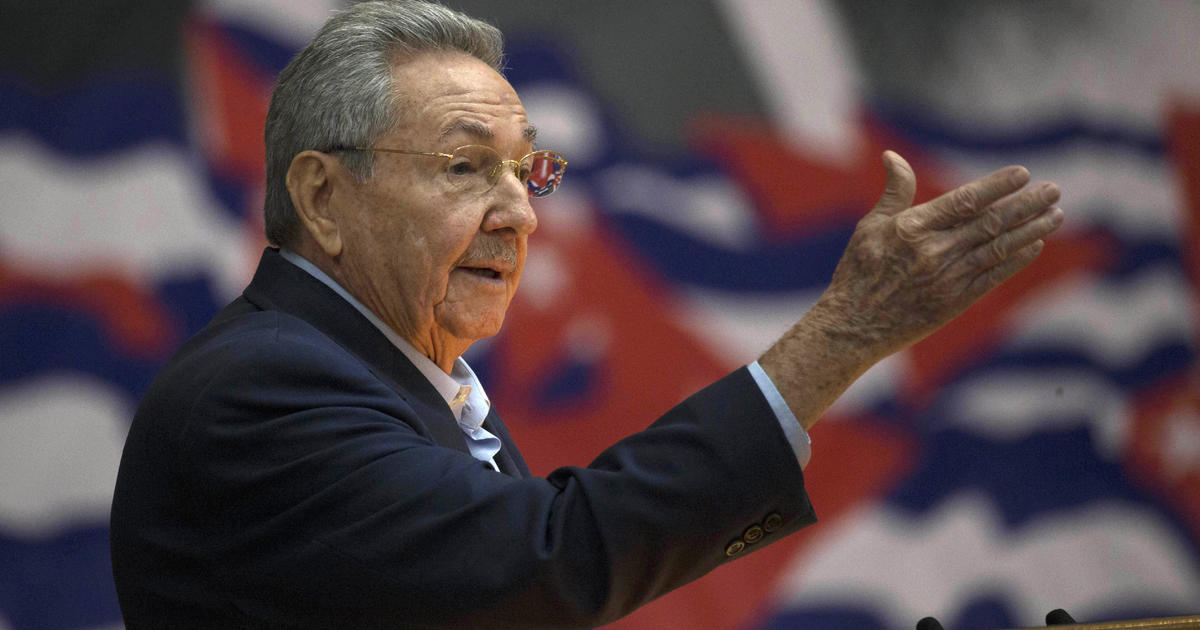
Raul Castro said Friday that he is stepping down as head of the Cuban Communist Party, ending an era of leadership that began with his brother Fidel and the country’s 1959 revolution. The 89-year-old Castro announced this in a speech at the opening of the eighth congress of the ruling party, the only one allowed on the island.
He said he retired feeling “he had fulfilled his mission and had confidence in the future of the homeland.”
“Nothing, nothing, nothing is forcing me to make this decision,” Castro said in his speech before the private congress, some of which was broadcast on state television. “As long as I live, I will be with my foot in the stirrup ready to defend the Fatherland, the Revolution and Socialism with more force than ever.”
Castro did not say who he would support as his successor as the Communist Party’s first secretary. But he previously stated that he prefers to hand over control to 60-year-old Miguel Díaz-Canel, who succeeded him as president in 2018 and is the flag bearer of a younger generation of loyalists who have been pursuing an economic opening. without hitting the sole party of Cuba. system.
Photos released by the official Cuban news agency showed that Castro, dressed in an olive green uniform, entered the compound with Díaz-Canel by his side.
Castro’s retirement means that for the first time in more than six decades, Cubans will not have a Castro to run their affairs formally. Many had expected the change.
“You have to step aside for the young,” said 64-year-old retired Juana Busutil, for whom Castro “will remain the leader”.
The transition comes at a difficult time for Cuba, and many on the island are concerned about what lies ahead.
The coronavirus pandemic, painful financial reforms and restrictions imposed by the Trump administration have battered the economy, which contracted 11% last year due to a collapse in tourism and remittances. Long food lines and shortages have returned the echoes of the “special period” that followed the collapse of the Soviet Union in the early 1990s.
Discontent has been fueled by the proliferation of the Internet and growing inequality. Much of the debate in Cuba has focused on the pace of reforms, with many complaining that the so-called “historic generation” represented by Castro has been too slow to open up the economy.
In January, Díaz-Canel finally pulled the trigger on a plan approved two congresses ago to unify the island’s dual currency system, sparking inflation fears. He also opened the doors to a wider range of private businesses – a category that had long been banned or strictly restricted – allowing Cubans to legally run all kinds of independent businesses from their homes.
This year’s Congress is expected to focus on unfinished reforms to reform state-owned enterprises, attract foreign investment and provide more legal protections for private business activities.
The Communist Party is made up of 700,000 activists and under the Cuban constitution is tasked with running the affairs of the nation and society.
Fidel Castro, who led the revolution that ousted dictator Fulgencio Batista from power in 1959, formally became head of the party in 1965, about four years after he officially embraced socialism.
He quickly absorbed the old party under his control and was the undisputed leader of the country until he fell ill in 2006. In 2008, he handed over the presidency to his younger brother Raul, who had fought with him during the revolution.
Raul succeeded him as head of the party in 2011. Fidel Castro died in 2016.
For most of his life, Raul played his brother Fidel’s second chord – first as a guerrilla commander, later as a high figure in their socialist government. But for the past decade, it has been Raul who has been the face of communist Cuba and his opposition to the US’s attempts to oust its socialist system.
Raul, the fourth of seven children of a Spanish immigrant in eastern Cuba, had joined his charismatic older brother in a near suicide attack on the Moncada military barracks in the eastern city of Santiago in 1953 and survived the crackdown that followed by the Batista’s troops.
He led a large front in the ensuing guerrilla war led by Fidel who overthrew Batista and later served as head of the armed forces. For years he was considered a more orthodox communist than his brother.
But it was Raul who reached an agreement with US President Barack Obama in 2014 who created the most extensive US opening to Cuba since the early 1960s – sparking a wave of contacts with the United States that was largely reversed under Obama’s successor. Donald Trump.
With Raul Castro stepping down as party leader amid changes and challenges, some say the island needs continuity in the future.
“All processes have continuity and I think Díaz-Canel should be here now,” said 58-year-old racing driver Miguel Rodríguez.